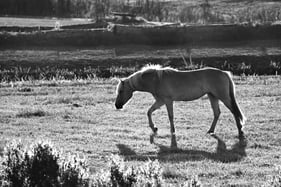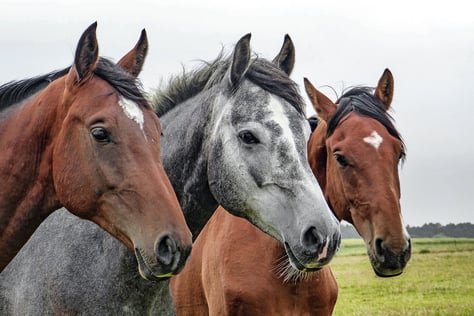Horse health terms can be confusing, especially those about hock, made up of four joints and six bones. Two conditions that are often confused are capped hock vs. curb. Both of these conditions involve the very back or top of the hock.
 Capped hock refers specifically to bursitis of the calcanean bursa. That is the synovial structure the sits on the very top of the point of the hock (tuber calcanei). Inflammation of the bursa is typically caused by trauma - kicking or bumping the area.
Capped hock refers specifically to bursitis of the calcanean bursa. That is the synovial structure the sits on the very top of the point of the hock (tuber calcanei). Inflammation of the bursa is typically caused by trauma - kicking or bumping the area.
A curb specifically refers to inflammation of the plantar ligament itself-not a synovial structure. This ligament runs down the very back of the hock from the tuber calcanei and ties in at the back of the hock. When inflamed it produces a convex appearance of varying degrees when the hock is viewed from the side.
It is important to have your veterinarian evaluate the area with an ultrasound to identify exactly which structures are inflamed. There are several other structures in that vicinity that may give the appearance of a curb when inflamed and may confuse
accurate diagnosis. For example, injury and inflammation of the proximal deep digital flexor tendon, proximal superficial digital flexor tendon, tarsocrural lateral collateral ligament or the peritendinous/periligamentous tissues could all be confused with inflammation of the long plantar ligament depending on the degree of damage.
Your veterinarian can determine the most appropriate treatment protocol with the help of diagnostic exams and specimen analysis.



